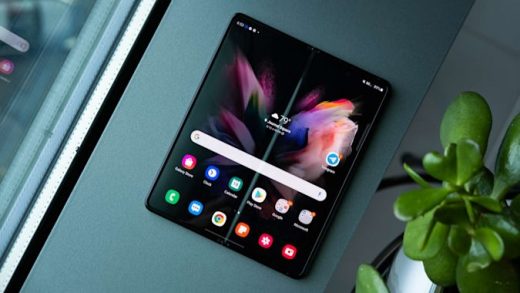2021’s winners in tech
Here are the winners in tech for 2021
Some of the bright spots we (begrudgingly) recognize in yet another hellish year.

Though this year is by no means one to celebrate, there were still some bright spots in the world of tech. It’s with plenty of loathing that we admit this: NFTs somehow won this year. They’ve taken over. Reddit’s day traders also deserve recognition for the way they’ve managed to manifest GameStop’s slogan, “Power to the players.”
Also (and this might be the most painful to acknowledge), the Metaverse (sorta) took off this year. At least in terms of our lexicon, with mentions of the word skyrocketing since Mark Zuckerberg uttered it while announcing plan for a richer VR and AR-focused world. Maybe people were confused between “metaverse” and “multiverse” as in Dr. Strange in the Multiverse of Madness?
Besides the things we love to hate, there are some products this year we genuinely liked as well. Apple continued to impress with its M1 chips and, more importantly, gave users a way to repair their own devices (kinda). Google’s first-ever mobile chip powered clever experiences on the latest Pixel phones and showcased the company’s AI and software prowess at a competitive price. As we continue to be bombarded by depressing news every day, it’s worth taking the time to reflect on the wins this year, no matter how tiny.

NFTs
2021 has not been a quiet year, so NFTs deserve something approaching praise for securing a spot in the highlights reel. NFTs, or Non-Fungible Tokens, are an attempt to create an immutable digital asset in an environment where such a thing has historically been tricky. For the industry’s proponents, it’s a way of imposing some form of scarcity on digital artifacts that you can’t easily make scarce. Anyone can right-click and save a picture of a monkey wearing sunglasses and a Hawaiian shirt after all. But only the person who paid a lot of money for the NFT can go around calling themselves the “owner” of the same. As Nietzche didn’t say, NFTs are the lie agreed upon, suggesting that people respect the owner of the certificated copy of something over everything else.
So far, the biggest and most notable moves in the NFT space have happened in the art market, with pieces being bought and sold for eye-watering numbers. On March 11th, digital artist Beeple sold Everydays: The First 5,000 Days at Christie’s auction house for $69,346,250. Those hefty sums are, in some people’s minds, justified because they believe that NFTs will become the new crypto, with everyone trying to get aboard the bandwagon before it goes big. After all, there are lots of folks who got rich during the Bitcoin boom that want to further enhance their fortunes, while some who were left behind now hope to get in on the ground floor on the next big thing. Others, meanwhile, think that the big craze in NFTs right now is to help folks move large quantities of money around away from the auspices of, you know, regulators.
The NFT market is so awash with speculator cash that it’s normal to have… questions. A recent Harvard Business Review article talks about how commerce can’t work without “clear property rights,” which NFTs help to impose. There’s also the matter of whether NFTs could better enable more reliable and secure ticketing and permission systems? I’ll be honest, I’m personally unconvinced by the argument that NFTs offer rights of ownership, since they don’t necessarily confer upon the buyer the proper rights of ownership.
These issues are, however, going to be worked out over the next few years, and it will only be when the speculation has died down that we’ll see if NFTs have any residual worth. And, hey, not every deeply-technical cryptographic ownership record gets their own SNL sketch shortly after they broke into the mainstream, do they.
— Daniel Cooper
The Metaverse
Mark Zuckerberg didn’t invent the term, but by rebadging Facebook as “Meta,” he helped kick off a wave of interest in the metaverse. While it was originally a dystopian view of cyberspace via Neal Stephenson’s Snow Crash, the metaverse now represents the next big online goldrush. You can think of it as the logical step forward from the mobile internet, a world where our online experiences can easily transition between multiple devices. And eventually, it could be something we interact with via AR and VR glasses.
To be clear, we still don’t have an exact idea of what the metaverse will be. The Meta renaming could easily be seen as a way for Zuckerberg to avoid his responsibilities as the leader of a fundamentally broken social media company. But other companies have been exploring this idea for years: Microsoft’s HoloLens has proven to be surprisingly useful for commercial and front-line workers, and it’s also core to Mesh, the company’s ambitious solution for virtual meetings. The Borg-like Google Glass was widely ridiculed, but its failure hasn’t stopped Google from thinking about its role in the metaverse, either.
Maybe it’ll take a killer new device, like Apple’s fabled AR glasses, to bring the metaverse into focus. Or maybe it’ll go the way of wearables — a category of devices that’s useful for some people, but not necessarily essential for everyone. Either way, it’s something that will forever be tied to 2021.
— Devindra Hardawar
Home fitness tech is here to stay
As the pandemic kept many of us indoors and out of gyms, companies like Peloton, Apple, Tonal and even Amazon were able to pull us into new fitness habits and equipment.

Meanwhile, major fitness studios and gyms like Equinox, Soulcycle, OrangeTheory and F45 have modulated (while some created from scratch) their online services. Many companies expanded replayable class options or added live lessons, leaderboards and more in a bid to keep members fit – and keep those membership dues coming in.
COVID-19 offered a chance to shift our workout habits and reduce gym costs. Why pay $50 for a high-intensity interval training gym membership when I can track myself in Apple’s Fitness Plus classes, SharePlay with my friends and jump in my own shower, all for just $10 a month?
Of course, the comparison isn’t oranges for oranges, and despite cheerleading Peloton trainers and form corrections from gym coaches over video livestreams, it’s very hard to get the degree of attention gained from in-person training. That’s likely one reason why at-home exercise injuries have never been higher. The Wall Street Journal reported that emergency room visits after home workouts increased by more than 48% from the end of 2019 through the end of 2020, according to a survey by Medicare Advantage.
However, just like traditional gyms did when the pandemic first hit, these businesses have to figure out how to hold onto their customers.
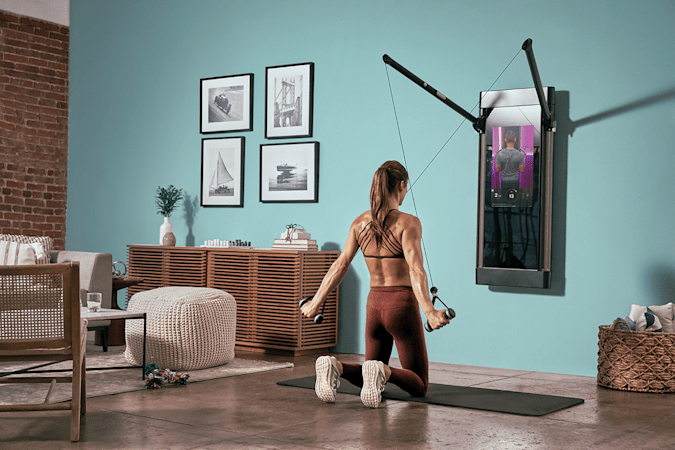
Tonal is a ‘Peloton for weight training’ product that Engadget tested back in 2018. When our usual bench-press machines and squat racks were locked inside gyms over the last year and a half, Tonal saw demand for its resistance-training system rocket. Sales grew more than eight times year-over-year. In a bid to hold onto these new customers, the company recently introduced live classes for Tonal owners, with direct feedback from coaches and classes reportedly calibrated for each user.
Meanwhile, Peloton, arguably the most recognizable at-home fitness company, faces more competition from (and litigation with) rivals and a tougher business outlook. After a rough earnings report in November, the company said it didn’t expect to be profitable again until 2023. Worse, its Bike was involved in the death of an important character in the Sex and the City reboot, And Just Like That. But the company has plans (and cheeky responses). It’s integrated into many corporate fitness plans, launched its first exercise game, announced a fitness camera for strength training and finally — added a pause button.
The challenge will be keeping many of us from returning to our old gyms, cycling commutes, or our old, less healthy habits when things eventually return to normal.
— Mat Smith
Apple takes baby steps toward the right to repair
Apple continued to impress the industry with its M1 Pro and M1 Max chips this year, putting them in new MacBooks that garnered rave reviews. And though the iPhone 13 Pro is just catching up to Android phones with its 120Hz screen, it’s an undeniably good device with solid cameras and excellent performance. The Apple Watch Series 7 isn’t much different from its predecessor, barring its larger display, but it’s still the best smartwatch around. Plus, Apple TV+ gained much more credibility in 2021 with the giant pile of awards its original series Ted Lasso brought home.
But the biggest thing that Apple did this year was to start selling DIY iPhone and Mac repair kits to consumers. After it was discovered Face ID on an iPhone 13 would stop working if a third party replaced its screen, the company first issued a software fix for this specific issue and announced the repair kits shortly after. The move was hailed by activists as a victory for the right-to-repair movement, given the company’s history of making it obnoxiously difficult for you to get your Apple products fixed by anyone else.
Of course, Apple could still do better — activists say the company’s plans could be more comprehensive, for example. But this is a major reversal of policy that shows the company is opening up, ever so slightly. Last year, it allowed users to set third-party browsers and email apps as their default on iPhones and iPads. This year, it introduced FaceTime on the web as a means to allow PC and Android users to join calls that they had previously been excluded from. The company may never fully embrace integrating different ecosystems into its walled garden, but it seems they’re at least listening to what people want and taking small steps towards giving users what they deserve.
— Cherlynn Low
Gamestop
At the start of 2021, Gamestop’s share price was $17.25. As of this writing, it’s $136.88. This year has been so long that it’s easy to forget many things that happened in January, including the Reddit-driven short squeeze that pushed Gamestop’s stock price to as high as $500 at its peak. Despite subsequent criticism, calls for better regulation, a congressional hearing on what happened and multiple class-action lawsuits having been filed against parties like brokering app Robinhood, here we are 12 months later with the company’s stock still higher than it’s ever been before 2021.
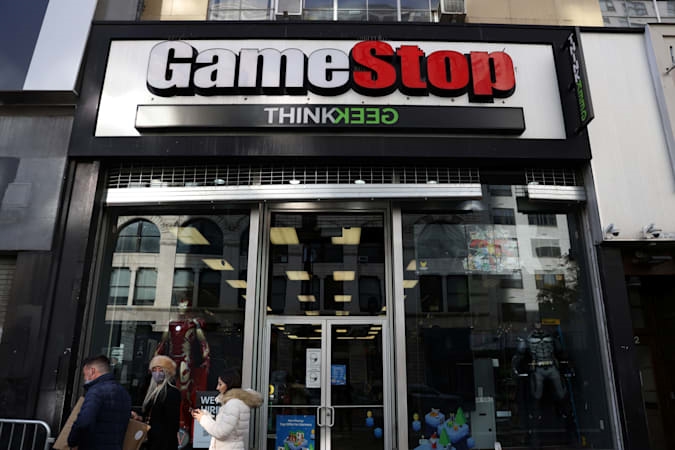
Of course, a company’s share price isn’t a true indicator of its overall performance and health. But this is a far cry from 2019 when GameStop was posting tens of millions in losses and planning to shutter up to 200 stores. In 2020, its main challenges were around trying to keep its outlets open in the face of stay-home mandates and making sure it had enough consoles to sell.
This year, in possibly the most 2021 combination of words ever, GameStop announced it’s working on an NFT platform based on Ethereum. It also signed a lease for a new 530,000 square-foot fulfilment center in Nevada and opened a new customer care center in Florida. It made $1.18 billion in the second quarter compared to $942 million in the same period in 2020. That could partly be due to the fact that Sony and Microsoft launched their consoles after the second quarter in 2020. Basically, 2021 has been a great year for GameStop, and not just for its business.
Discovery+ is even working on a documentary (narrated by “Wolf of Wall Street” Jordan Belfort) on the entire fiasco titled GameStop:The Wall Street Hijack. Nine other films based on these events are reportedly in the works, according to Vulture. Gamestop wasn’t the only company that Reddit’s day traders flocked to in their nostalgia-driven frenzy, either. Companies like BlackBerry and AMC also saw their share prices surge, with the latter’s stock jumping 480 percent at its peak. GameStop’s slogan uncannily sums up the situation: “Power to the players.”
— C.L.
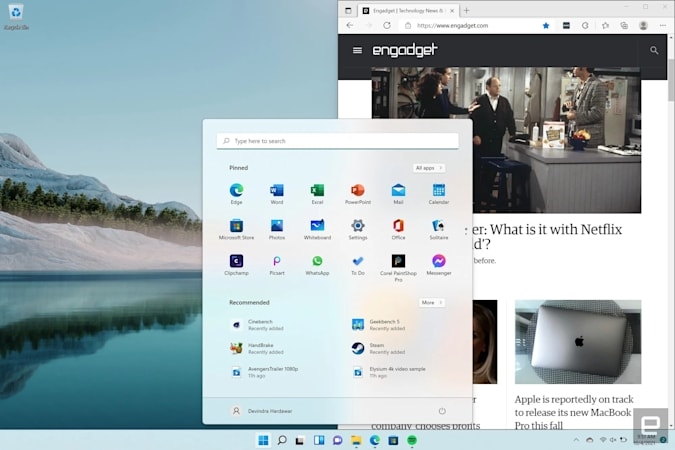
Windows 11
If you had told me in January that Microsoft had its Windows 10 successor primed and ready for release by the end of the year, I would have laughed in your face. But Windows 11 is actually here, and it’s a pretty solid step forward aesthetically (despite some clunky usability issues). I’d bet even Microsoft was surprised it managed to make that happen.
Windows 11 rose from the ashes of Windows 10X, an OS variant that was originally supposed to focus on dual-screen devices, but was eventually canceled in May. That would explain why Windows 11 feels more like a fresh coat of paint on its predecessor. But despite that inauspicious start, it’s still a worthwhile update: there’s more of an emphasis on security, and the facelift brings some Mac-like pleasantries into the typically stark world of Windows.
It’s not a complete success — upgrading is an annoying process if you’ve got a self-built PC, and very old computers won’t be able to upgrade at all (at least, not without going through a manual ISO installation). But at the very least, Microsoft managed to keep most of what made Windows 10 such a successful operating system, while also delivering a more mindful experience for PC users.
— D. H.
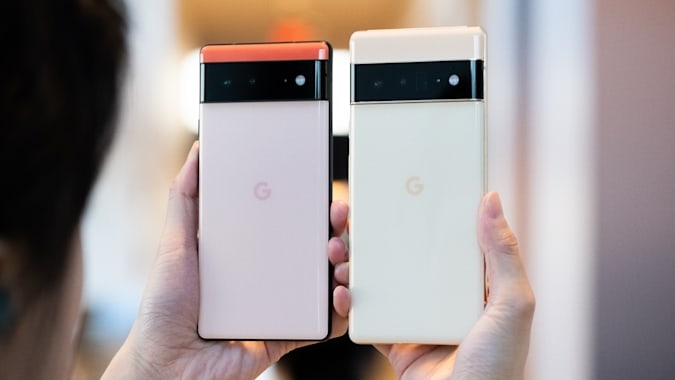
Google Pixel 6 Pro
The Pixel 6 Pro is my favorite Pixel yet. Yes, I wish Google offered a smaller handset in its latest flagship series, but that complaint aside, there’s plenty to love. The company’s first-ever mobile chip Tensor powers the phone’s impressive AI features like live translation in messages and captions, as well as smarter voice typing features.
Most of all, I adore the Pixel 6 Pro’s cameras. If I’m headed out somewhere that I have the slightest sense might warrant some sort of picture-taking, I make sure to bring the 6 Pro with me. Its portrait mode, which I abuse for my food photos, is superior to every other phone I’ve used, and frankly, I’m partial to Google’s colors and clarity.
Plus, bonus features like Magic Eraser, Face Unblur and Action Pan give me the option to add fun effects or clean up my shots. Everyone I’ve taken pictures of has been impressed by the quality. Of course, the Pixel 6 is not without its flaws. Setting aside my complaint about its size, the Pixel 6 Pro also has a finicky in-screen fingerprint sensor. Google has also had to issue several fixes in recent weeks to address bugs that themselves were caused by over the air updates. Still, as a showcase for Google’s strengths in software and AI, the Pixel 6 Pro fully delivers. Best of all, it does so for hundreds of dollars less than rival flagships.
— C.L.
Samsung foldables
In an admittedly niche industry, Samsung has pulled far ahead. Sure, it was one of the first to try its hand at foldables, but it’s also arguably the last one standing. The foldable phone race really kicked off when relative unknown Royole showed off the first working prototype at CES 2019. Soon after, Huawei and Samsung announced their own devices. The original Mate X and Galaxy Fold made the rounds at various press events after, but only Samsung eventually sold its first-gen foldable to the general public (outside of China, anyway).
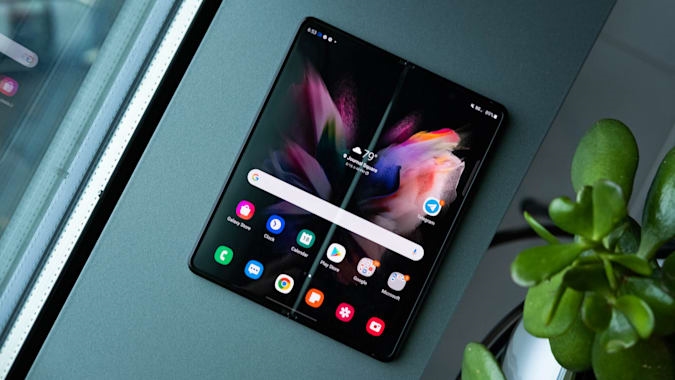
Motorola jumped on the trend, capitalizing on the sheer nostalgia value of its Razr Flip phone. Alas, all these initial attempts were doomed to fail. Foldables, it turns out, with their soft, vulnerable displays and damage-prone hinges, are hard to nail. Worse, the Razr Flip’s screen just felt weird and flimsy, and its hinge would make a cracking sound when you open or close the phone.
After a slew of reports of broken review units, Samsung returned with updated iterations of the Fold. It also released the Flip series, a smaller, Razr-like version that received its share of early complaints. Yet, today, Samsung not only continues to produce these foldables, but at cheaper prices, too. The Z series is now in its third generation, and Samsung said it shipped four times more foldables in 2021 than in 2020. While Huawei also unveiled a third version this year, its foldables haven’t been available in most places outside of China. We’ve also yet to see a new version of the Razr this year, although Motorola did roll out a 5G-capable update in 2020 that we never got to test. Companies like Oppo and Xiaomi have also unveiled their own foldables recently, but they’re relatively new to the game.
By bringing the price of the Z Flip 3 down to a more competitive $999 while continuing to improve the durability and usefulness of its products, Samsung has shown it may be the only company with the resources and expertise to continue to deliver foldable phones, even if they may never gain mainstream popularity.
— C.L.
(68)

